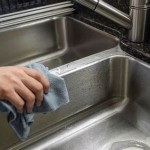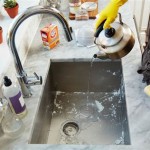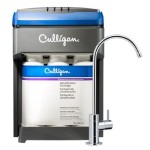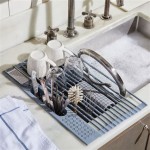My Sink Stinks: What Can I Do?
A foul odor emanating from a sink drain is a common household problem, and its presence often indicates an underlying issue that needs addressing. The unpleasant smell is typically caused by the buildup of organic matter, such as food scraps, hair, grease, and soap scum, which decomposes within the drainpipe. Understanding the causes and implementing appropriate cleaning methods are crucial for eliminating the odor and preventing its recurrence. This article explores common reasons for a sink's foul smell and provides detailed instructions for effective remedies.
Identifying the Source of the Odor
Before attempting to resolve the issue, accurately identifying the source and characteristics of the odor is important. This helps in narrowing down the potential causes and selecting the most appropriate cleaning method. Is the smell musty, rotten, or sulfurous? Does the odor worsen after running water, or does it appear randomly? Different smells can point to different underlying problems.
For instance, a rotten egg smell often indicates the presence of hydrogen sulfide gas, which is produced by anaerobic bacteria breaking down organic matter in the drain. A musty smell may indicate mold or mildew growth. A greasy, rancid smell usually points to accumulated fats, oils, and grease (FOG) within the pipes. Observational notes about the smell itself, and when it is most prominent, will aid in both immediate treatment and long-term prevention.
Furthermore, consider which sink is producing the odor. Kitchen sinks, especially those without garbage disposals or with infrequent disposal usage, are prone to food debris buildup. Bathroom sinks, on the other hand, often accumulate hair, soap scum, and toothpaste residue. Identifying the sink and its usual usage patterns will also provide important clues as to the nature of the issue.
Common Causes of Sink Odor
Several factors contribute to the development of unpleasant odors in sink drains. Understanding these causes can assist in implementing preventative measures to avoid recurrence.
Food Debris: This is a primary culprit in kitchen sinks. Small food particles, such as rice, pasta, coffee grounds, and vegetable scraps, can become trapped along the drainpipe walls. Over time, these particles decompose, releasing foul-smelling gases. Even with a garbage disposal, small amounts of food often bypass the grinder and accumulate further down the drain.
Hair and Soap Scum: In bathroom sinks, hair and soap scum are a common combination that causes blockages and odors. Hair tends to cling to the drainpipe walls, trapping soap scum and other debris. This mixture creates a breeding ground for bacteria, leading to unpleasant smells.
Grease and Oil Buildup: Fats, oils, and grease (FOG) solidify as they cool down, coating the inside of drainpipes. This buildup traps other debris, further restricting water flow and exacerbating the odor problem. Pouring grease down the drain is a major contributor to clogs and foul smells.
Biofilm Formation: Biofilm is a slimy layer of bacteria that can form on the interior surfaces of drainpipes. This film feeds on organic matter and releases odorous compounds. Biofilm is particularly common in drains that are not used frequently, allowing bacteria to thrive undisturbed.
Dry P-Trap: The P-trap is a U-shaped pipe located under the sink that is designed to hold water. This water barrier prevents sewer gases from entering the home. If the P-trap dries out due to infrequent use or evaporation, sewer gases can escape, causing a foul odor. Vacation homes or guest bathrooms are most susceptible to this problem.
Clogged Vent Pipe: Every plumbing system has a vent pipe that allows air to enter the drainpipes, ensuring proper water flow and preventing a vacuum from forming. If the vent pipe becomes clogged with debris, such as leaves, nests, or snow, it can lead to negative pressure within the drainpipes, drawing sewer gases into the home. This situation can cause a pervasive and unpleasant odor.
Effective Cleaning Methods
Several cleaning methods can be employed to eliminate sink odors, ranging from simple home remedies to more rigorous cleaning procedures. The choice of method often depends on the severity of the odor and the suspected cause.
Hot Water Flush: This is the simplest method and can be effective for minor odors caused by recent food debris. Pouring a large amount of boiling water down the drain can help to loosen and flush away loose debris. Exercise caution when using boiling water, especially with PVC pipes, as excessive heat can damage them. Run the hot water for several minutes to ensure the entire drainpipe is flushed.
Baking Soda and Vinegar: This is a popular and effective natural cleaning solution. Pour one cup of baking soda down the drain, followed by one cup of white vinegar. The mixture will fizz and bubble, helping to loosen debris and neutralize odors. Let the mixture sit for 30 minutes, then flush with hot water. Repeat as needed.
Baking Soda, Salt, and Boiling Water: This combination is another effective natural cleaning method. Pour one cup of baking soda and one-half cup of salt down the drain, followed by a kettle of boiling water. Let the mixture sit overnight, then flush with hot water in the morning.
Enzyme Drain Cleaners: Enzyme drain cleaners contain enzymes that break down organic matter, such as food, grease, and hair. These cleaners are a gentler alternative to harsh chemical drain cleaners and are less likely to damage pipes. Follow the instructions on the product label for proper application.
Chemical Drain Cleaners: Chemical drain cleaners are a more aggressive option for stubborn clogs and odors. These cleaners contain strong chemicals that can dissolve organic matter. However, they can also be corrosive and potentially damage pipes, especially older or PVC pipes. Use chemical drain cleaners with caution and follow the instructions on the product label precisely. Always wear gloves and eye protection when using these products.
Cleaning the P-Trap: If the above methods are ineffective, cleaning the P-trap directly may be necessary. Place a bucket under the P-trap to catch any water. Loosen the slip nuts that connect the P-trap to the drainpipes. Carefully remove the P-trap and empty its contents into the bucket. Clean the inside of the P-trap thoroughly with a brush and hot, soapy water. Reassemble the P-trap, ensuring the slip nuts are tightened securely.
Cleaning the Sink Stopper: The sink stopper can accumulate hair, soap scum, and other debris, contributing to odors. Remove the stopper from the drain and clean it thoroughly with a brush and hot, soapy water. Ensure all debris is removed before replacing the stopper.
Checking the Vent Pipe: If a sewer gas smell persists, inspect the vent pipe on the roof for any obstructions. Use a garden hose to flush out any debris that may be clogging the pipe. If you are uncomfortable working on the roof, consider hiring a professional plumber to inspect and clean the vent pipe.
Preventative Measures
Implementing preventative measures is crucial for avoiding future sink odors and maintaining a clean and healthy plumbing system.
Avoid Pouring Grease Down the Drain: Never pour fats, oils, or grease down the drain. Allow grease to cool and solidify, then dispose of it in the trash. Use sink strainers to catch food particles, hair, and other debris. Empty the strainers regularly to prevent buildup.
Flush with Hot Water Regularly: Run hot water down the drain for several minutes after each use to help flush away any loose debris. Consider flushing the drain with hot water and a small amount of dish soap once a week to prevent buildup.
Use Enzyme Drain Cleaners Periodically: Use an enzyme drain cleaner on a monthly basis to help break down organic matter and prevent buildup. This can help maintain a clean drain and prevent odors from developing.
Maintain the P-Trap: If a sink is not used frequently, occasionally run water down the drain to ensure the P-trap remains filled with water. This will prevent sewer gases from escaping into the home.
Proper Garbage Disposal Usage: When using a garbage disposal, always run cold water while grinding food scraps. Avoid grinding large amounts of fibrous materials, such as celery stalks or corn husks, as these can clog the drain. Flush the disposal with plenty of water after each use.
Professional Plumbing Inspection: Schedule a professional plumbing inspection annually to identify and address any potential problems, such as clogged drains or vent pipes, before they lead to significant issues.

How To Clean A Stinky Sink Drain Home Repair Tutor

Why Does My Kitchen Sink Smell Like Sewer Mike Diamond

Why Does My Bathroom Sink Smell How Do I Resolve It

What S That Stinky Smell In My Drain Odor Fix

Stinky Sink Here S What Causes A Foul Drain Smell

Why Does My Bathroom Sink Stink Plumbing Authority Inc

Why Does My Drain Smell Bad Any Hour Services

Why Do My Drains Smell Experts Explain

Your Household Water Quality Odors In Uga Cooperative Extension

Why Does My Bathroom Sink Stink Plumbing Authority Inc







